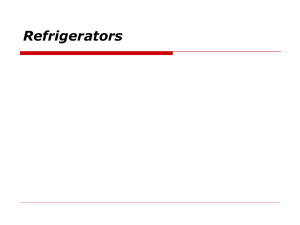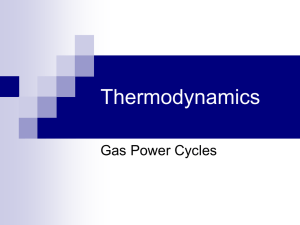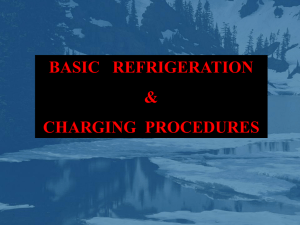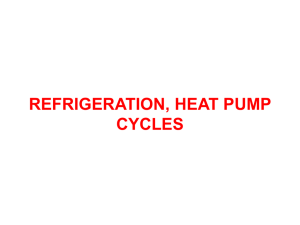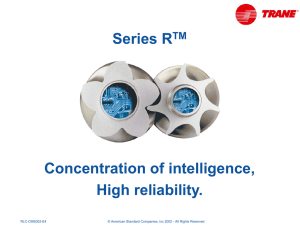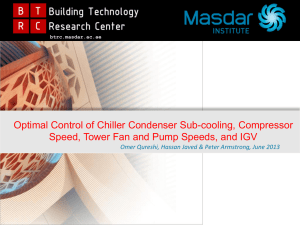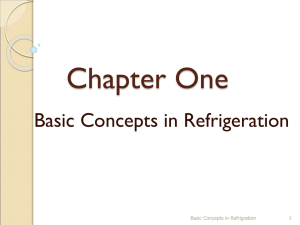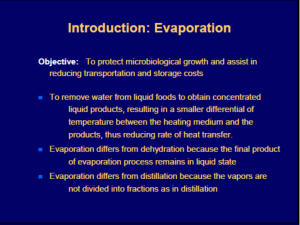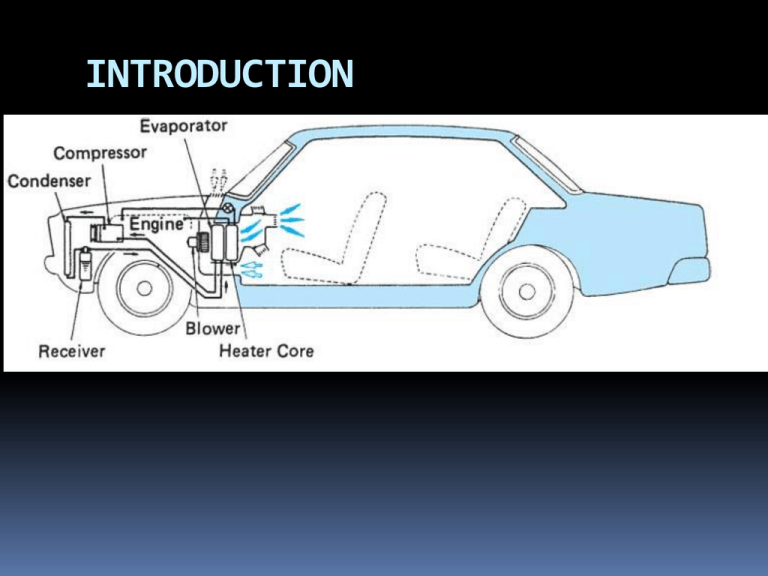
INTRODUCTION
TWO BASIC
TYPES
THERMAL
EXPANSION
VALVE
(old school)
Uses a Receiver/Drier
ORIFICE TUBE
AKA:
Cycling
Clutch
Orifice
Tube
Uses an
accumulator
The high and low pressure sides of an A/C
system are divided by the compressor (where the
pressure is increased) and either a TXV or an OT
(where the pressure drops).
HIGH
PRESSURE
LOW
PRESSURE
Refrigerant changes state from a liquid to a vapor as it
absorbs heat in the low side and into a liquid as it loses heat
in the high side.
Refrigerant boils or evaporates (Gas) in the low side and it
condenses (Liquid) in the high side.
In an operating system, you can identify the low and high sides
by:
Pressure (depending on type of system & ambient temp)
High (175 psi)
Low (30 psi )
Location
High (out)
Low (in)
Temperature
High (hot)
Low (cold)
Tubing size
High (small)
Low (large)
LOW-SIDE OPERATION
When the A/C system is in full operation,
the goal of most systems is to maintain
an evaporator temperature just above
the freezing point of water, 32°F (0°C).
This temperature produces the greatest
heat exchange without ice formation on
the evaporator fins (evaporator icing
significantly reduces the heat transfer).
The cold temperature in the evaporator is
produced by boiling the refrigerant (lowering
pressure).
Remember that R-12 and R-134a have very low
boiling points, well below 0°F, and that when a
liquid boils, it absorbs a large amount of heat,
the latent heat of vaporization.
To produce cooling, liquid refrigerant must enter
and boil inside the evaporator.
The amount of heat an evaporator absorbs is
directly related to the amount of liquid
refrigerant that boils inside it
As liquid refrigerant
enters the evaporator,
the boiling point will try
to drop as low as
32°F because of the
drop in pressure. The
cold temperature
causes the refrigerant
to absorb heat from
the air circulated
through the
evaporator.
If the
proper
amount of
refrigerant
enters the
evaporator,
it has a
slight
superheat
as it leaves.
A starved
condition, in
which not
enough
refrigerant
enters the
evaporator,
does not
produce as
much
cooling.
If too much
refrigerant
enters, the
evaporator
floods because
the refrigerant
will not all boil.
The low side begins at the TXV and includes the evaporator,
receiver/drier and suction line to the compressor.
The OT
system is the
same but
has an
accumulator
EXPANSION DEVICES
A TXV is
controlled by
the pressure
on the
diaphragm
from the heatsensing tube,
the pressure
spring, and
evaporator
pressure
through the
equalizer pipe.
An H-type
valve is
essentially
the same
except
evaporator
pressure
goes
through an
internal
passage to
the bottom
of the
diaphragm.
SUCTION THROTTLING VALVE ON
TXV
Some systems use a suction throttling valve to keep evaporator pressure from
dropping to the point at which icing can occur.
ORIFICE TUBE
An OT is a simple restriction that limits the flow of refrigerant into
the evaporator. The locating dimple keeps the OT from moving
downstream.
Two views of a typical OT
system; (a) is somewhat
realistic and (b) is
schematic. Both show the
arrangement of the
components and the
refrigerant flow.
EVAPORATOR
TUBE & FIN
PLATE
Each type has a large contact area for heat to leave the air and
enter the refrigerant.
Accumulators are
designed so that vapor
from the top leaves to
the compressor. They
contain desiccant to
absorb water from the
refrigerant and many
include a fitting for lowside pressure and the
clutch cycling switch.
Water in an A/C system can combine with refrigerant to form acids. These acids can etch
and dissolve components, cause rusting of metal parts, and cause ice blockage at the
expansion device.
An automotive A/C system has the potential to lose refrigerant
through hoses, the compressor shaft seal, and line fittings
A system with the proper charge has the receiver–drier (a)
or the accumulator (b) about half full of liquid
A properly charged system has the condenser filled with condensing
vapor and some liquid, a liquid line filled with liquid, a receiver–drier
about half full of liquid, and an evaporator with vaporizing liquid
An overcharge with too much liquid causes liquid to partially fill
the condenser
An undercharge has vapor in the liquid line and a starved evaporator
The compressor clutch allows us to cycle the compressor off
and on to control evaporator temperature and to shut the
system off
Most TXV systems use a thermal switch to cycle the compressor out when the
evaporator gets too cold. Most OT systems use a pressure switch to cycle the
compressor out when the low-side pressure drops too low.
SUCTION THROTTLING VALVE
A suction throttling valve (STV) stops evaporator pressure from dropping
below 30 psi, and this keeps ice from forming on the evaporator.
HOT GAS BY-PASS
A hot gas bypass system diverts high-side pressure into the
evaporator to keep the pressure from dropping to the point at which
icing can occur.
HIGH-SIDE OPERATION
The high side of an A/C system takes the lowpressure vapor from the evaporator and returns
high-pressure liquid to the expansion device.
To do this, the compressor must raise the
pressure and concentrate the heat so that the
vapor temperature is above ambient.
This causes heat to flow (exchange) from the
refrigerant to the air passing through the
condenser.
Removing the latent heat from the saturated
vapor causes it to change state, to a liquid.
HIGH-SIDE OPERATION
Compressor
Crank Piston
Rotary Piston
Vane
Scroll
Electric or Belt Driven
Condensers
Receiver–Drier
High-Pressure Control
CRANKSHAFT PISTON COMPRESSOR
(OLD SCHOOL)
REED VALVE
IN
OUT
ROTARY
CRANK
WOBBLE PLATE PISTON
VARIABLE DISPLACEMENT
When the
evaporator cools
and low-side
pressure drops,
the piston stroke of
a variable
displacement
compressor is
reduced so that
compressor output
matches the
cooling load.
PISTONLESS WOBBLE
PLATE
VANE
VANE MOVEMENT
SCROLL
A cutaway view
of a scroll
compressor.
Note that one
scroll is
secured to the
housing and
the other can
be moved
through its orbit
by the drive
shaft.
SCROLL OPERATION
Like and Auger or drill bit
ELECTRIC DRIVEN
CAN BE SAME TYPES AS BELT DRIVEN COMPRESSORS
CONDENSER
A condenser is a
heat exchanger
that transfers
heat from the
refrigerant to the
air flowing
through it.
Typically located
in front of
radiator
REFRIGERANT FLOW
Refrigerant follows a
winding path through a
serpentine condenser.
Refrigerant follows a back-andforth path through a parallelflow
condenser.
LIQUID EXPANSION
The volume of gas that enters a condenser is about 1,000 times the volume
of liquid leaving it.
DUAL CONDENSER
refrigerant flows from the condenser portion through the modulator/receiver–drier portion and
then through the subcooling portion.
RECEIVER DRIER
The outlet of a
receiver–drier is close
to the bottom so
liquid flows on to the
TXV. Many units
include a sight glass
so we can observe
this flow.
•A high-pressure
relief valve
HIGH PRESSURE RELIEF
VALVE
contains a strong spring that
keeps the valve closed unless
high-side pressure forces it
open & the valve closes when
the pressure drops
• The fusible plug contains a
meltable metal insert that will
blow out if pressure gets too
high. (no reset)
•Accumulator has no need for
valve
LINES AND HOSES
The various system components must be
interconnected so that refrigerant can
circulate through the system. In modern
vehicles, the majority of the lines are metal;
hose is used only where flex is necessary.
Both flexible rubber and rigid metal hoses are
used to link the components.
The connections to the compressor must be
flexible to allow for engine and compressor
movement.
A refrigerant hose
contains one or two
reinforcing braid layers
around the rubber tube .
A barrier hose includes
an impervious nylon layer
to reduce leakage
THE THREE MAJOR HOSES/LINES ARE THE
DISCHARGE, LIQUID, AND SUCTION LINES.
MANY SYSTEMS HAVE TWO LIQUID LINES.
Typical hose
sizes.
Most systems
use three of
these four
(6,8 &10 or
8,10 & 12)
Various types of
fittings are used to
seal the refrigerant
line connections.
The service fitting
is used for metal
line repairs or to
insert an inline
filter.
Automotive Heating and Air Conditioning, Fifth Edition
By Tom Birch
© 2010 Pearson Higher Education, Inc.
Pearson Prentice Hall - Upper Saddle River, NJ 07458

